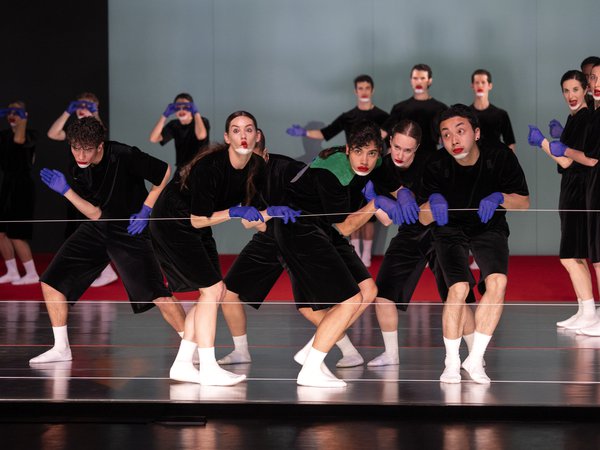This is a past event.
BORIS CHARMATZ / Terrain
BORIS CHARMATZ / Terrain
For 10000 gestures, I envision a choreographic forest in which no dancer ever repeats any of the gestures, each of which will be shown only once and will vanish as soon as it has been executed, like an ode to the impermanence of the art of dance. This shower of movements, which could have been a data project generated by lists of digital parameters, will be instead generated in an artisanal way, using the very bodies of the performers, in an absolutely subjective way. The visual hypnosis exerted by the explosion of movements will have a corresponding meditative, or even melancholic, aspect: the "gift" of movements doomed to symbolic disappearance.
This idea came to me as I was watching the "permanent" version of Levée des conflits, danced at MoMA: in Levée des conflits, we construct a sculpture that aims at immobility, but which is animated by a crowd of dancers who ensure a permanent presence of movement maintained through its indefinite transmission. In 10000 gestes, by contrast, it is the ephemeral taken to the extreme that engenders the gaze and the thought of the spectator. The chaos of expenditure is so perfect that it vergers on immobility.
In line with other projects of the Musée de la danse, 10000 gestes constitutes a choreographic anti-museum aiming to explore the means of escaping the instinct and the strategies of preservation at work in the activity of a dancer... It will be matter of exploring the possibility that one gesture is never completed by another, and that, if 1, 2, 3, 4, 5, 6, 7, 8, or 25 dancers come in contact, each still executes a gesture distinguished from those of others through the exclusion of any symmetrical movement: in this piece, it is impossible to shake someone’s hand. The collection thus constituted is also an anti-collection, since no choreographer worthy of the name would risk incorporating 10000 gestes in his or her score, and this totality cannot be comprehended other than by the idea that generated it.
choreography
Boris Charmatz
Interpretation
Djino Alolo Sabin, Or Avishay, Régis Badel, Jessica Batut, Nadia Beugré, Alina Bilokon, Nuno Bizarro, Mathieu Burner, Ashley Chen, Konan Dayot, Olga Dukhovnaya, Sidonie Duret, Bryana Fritz, Julien Gallée-Ferré, Kerem Gelebek, Alexis Hedouin, Rémy Héritier, Tatiana Julien, Samuel Lefeuvre, Noé Pellencin, Solène Wachter, Frank Willens
choreographic assistant
Magali Caillet-Gajan
Lights
Yves Godin
light technician
Samuel Dosière
Costumes
Jean-Paul Lespagnard
vocal training
Dalila Khatir
general stage manager
Fabrice Le Fur
sound technician
Olivier Renouf
Dresser
Mickaël Lecoq
production direction (2017)
Sandra Neuveut, Martina Hochmuth, Amélie-Anne Chapelain
production direction (2020)
Martina Hochmuth, Hélène Joly
production assistant
Florentine Busson, Elodie Vitrano
sound material
Requiem in D minor K.626 by Wolfgang Amadeus Mozart (1756–1791), performed by the Wiener Philharmoniker conducted by Herbert von Karajan and recorded at the Wiener Musikverein in 1986 (1987 Polydor International GmbH, Hamburg); field recordings by Mathieu Morel in Mayfield, Manchester
production, distribution
terrain
A production
Musée de la danse (2017)
Coproduction
Volksbühne Berlin, Manchester International Festival (MIF), Théâtre National de Bretagne-Rennes, Festival d’Automne à Paris, Chaillot – Théâtre national de la Danse (Paris), Wiener Festwochen, Sadler’s Wells London, Taipei Performing Arts Center





















